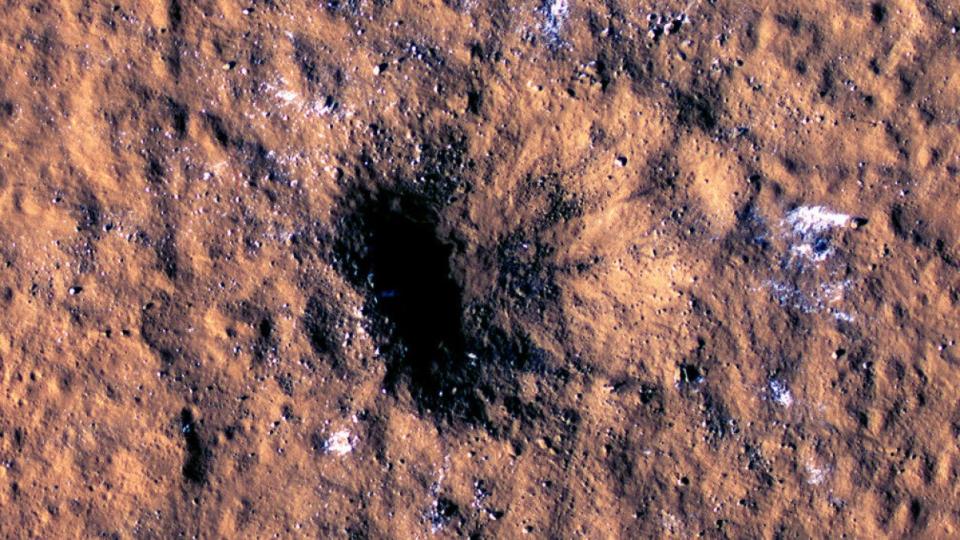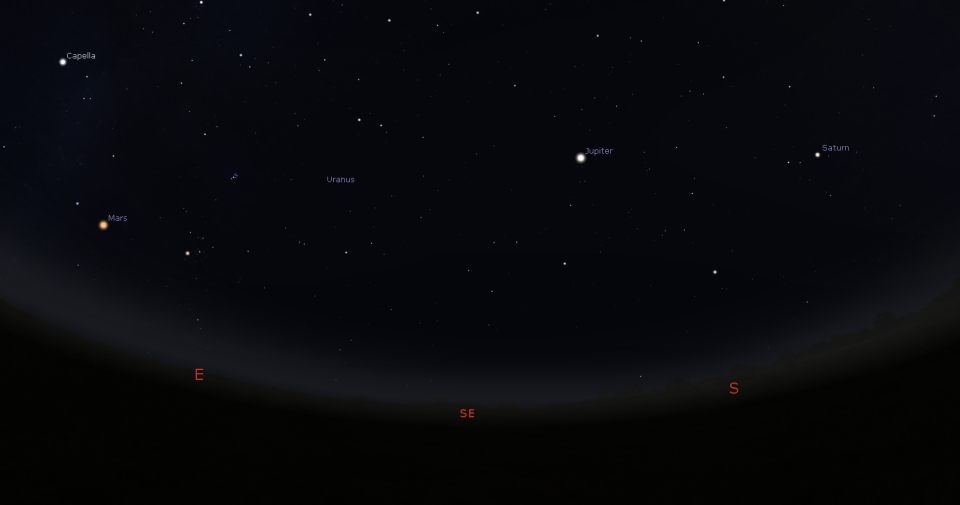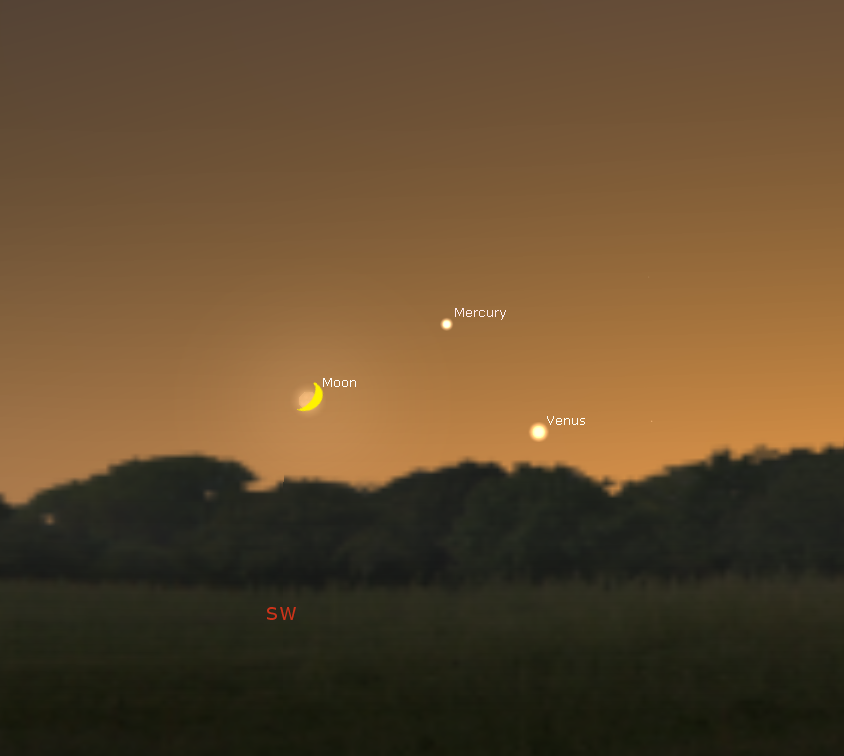Sky Shorts: Celebrating 50th anniversary of final Apollo mission
This month, we celebrate the 50th anniversary of Apollo 17 – the last Apollo mission – when we stood on the moon the last time.
By landing astronauts on the moon before the Soviet Union, the United States met its technological, economic and political superiority goals.
But a large portion of Apollo was dedicated to scientific research. The program collected 842 pounds of lunar rocks, pebbles, sand and dust over the six missions that landed on the moon. Apollo’s hardware was used to build Skylab, America’s first space station. Also, NASA engineers used what they learned from Apollo for the Space Shuttle design.
On Dec. 7, 1972, Apollo 17 launched, with the first scientist aboard – Harrison Schmitt. The astronauts obtained the oldest known unshocked rock, which was the most interesting sample, a mere 4.2 billion years old! The rock suggests the moon had a dynamo-generated magnetic field in its past. Astronaut Gene Cernan took humankind’s final step on the moon, at 4:40 UT on Dec. 14, 1972.
A diplomatic goal of President John F. Kennedy was to see the United States and Russia work together, which is a legacy that continues today. The United States, Russia and 16 other countries work together aboard the International Space Station.
NASA made the first step to return to the moon, and then eventually on to Mars, on Nov. 16, 2022, with the launch of the uncrewed Artemis I mission.

Record breaking find by Mars Insight Lander and Mars Reconnaissance Orbiter
Last Christmas Eve, Mars experienced the largest crater forming impact on one of the rocky inner planets ever documented in real time. An object between 15 and 40 yards in diameter formed a crater that was 150 yards across and 21 yards deep and hurled rocks for nearly 25 miles. At that time, NASA’s Mars Insight Lander detected the largest Mars quake ever. Scientists learned just last month that the detected quake was actually the result of the meteor impact thanks to images by MRO. The images revealed boulder size blocks of water ice around the rim of the impact crater, at the warmest part of the planet. In the future when we land astronauts on Mars, near the equator, this finding will be extremely important. Ice can be converted into water, oxygen or hydrogen.
However, this finding is bittersweet. Unfortunately, this is the grand finale for Mars Insight Lander, which is losing power rapidly due to dust buildup from recent dust storms.
Night Sky for December

Planets and the Moon – This month, all five planets beyond Earth are part of the evening sky. Mars is at its finest in the eastern sky after sunset. It reaches opposition on Dec. 8, and is visible from dusk to dawn, just 7 days after its closest approach to Earth at 50.6 million miles. At magnitude, -1.9, Mars will also reach its highest point in the sky. Not since January 2007 has Mars been as close and highest at the same time! The full moon, occults (covers) Mars on Dec. 7, between 10:20 p.m. and 11 p.m. Next, the planet Jupiter dominates the evening. Looking south after sunset, the king of the planets is hard to miss! It is brilliant, dimming from magnitude -2.6 to -2.4 during the month. Saturn can be found in eastern Capricornus in the southwestern sky. Saturn is 30 degrees high in early December and sets at 10 p.m. at the beginning of the month and at 8 p.m. by Dec. 31. Neptune is located in Aquarius. Brilliant Jupiter is a useful guide to find Neptune. In early December, Neptune stands 6 degrees west of Jupiter and the distance extends to 8 degrees by month’s end. Binoculars will be needed. The crescent moon is 3 degrees south of Neptune on Dec. 28. Uranus lies in southern Aries. The Moon passes north of Uranus on Dec. 5. Mercury and Venus reappear from behind the Sun. On Dec. 1, the planet duo sets 38 minutes after the Sun and climb higher each day. You may be able to spot brilliant Venus! On Dec. 21, Mercury reaches its greatest eastern elongation and is 8 degrees high 30 minutes after sunset. On Dec. 24, the crescent moon joins the planet pair in the southwestern sky 30 minutes after sunset. Venus continues to pull away from the Sun. On Dec. 28, the two planets are 1.5 degrees apart 40 minutes after sunset. By New Year’s Eve, Mercury will be hard to spot. In other moon pairings, the moon and Jupiter on Dec. 1, the moon and Mars on Dec. 7, the moon and Saturn on Dec. 26, and the Moon and Jupiter, again on Dec. 29.

Constellations:
East – The most magnificent picture in our stars, Orion, the Hunter, returns to our night sky. Look for the three stars in a line, which make up the belt of Orion. The bright red-orange star up and to the left of the belt is Betelgeuse. The bright blue-white star down and to the right of the belt is Rigel. Draw a line up from the belt to a red, orange star, Aldebaran, which is the eye of Taurus, the Bull. The sideways V shape is the face of Taurus. Above Taurus, the small cluster of stars is the Pleiades or Seven Sisters. Making a counterclockwise loop from the Pleiades, the next bright star is Capella. Continuing down, the two stars you see are Gemini, the Twins.
North – The Big Dipper is low on the horizon. Following the two stars at the end of the cup to the next bright star, is Polaris or the North Star. The constellation Cassiopeia is above Polaris and resembles the letter “M.”
West – Sinking lower are the bright stars Vega, Deneb and Altair which form the Summer Triangle.
Binocular Highlights – When facing north, locate the “M” shape of Cassiopeia. From the left point of the “M” shape, scan slowly up to the left. You will see a fuzzy circular shape. That is the Andromeda Galaxy. From the right point of the “M”, scan up slightly. You will come upon the Double Cluster in Perseus. Facing east, you will see a small cluster of stars, the Pleiades or the Seven Sisters. The Pleiades is a beautiful open star cluster. Head to Orion, the Hunter. Scan below the three stars of Orion’s belt. You will see a fuzzy area with bright stars. This is the Orion Nebula, a hydrogen gas cloud where new stars are forming.
Other highlights – The Winter Solstice will occur at 4:48 p.m. Dec. 21. The peak of the Geminid Meteor Shower is Dec. 13 -14, but the bright gibbous Moon will interfere in the late-night hours. Get out during the evening hours and you might catch some of the bright meteors. For further night sky details, maps, and audio, visit my website www.starrytrails.com.
VISIT HOOVER PRICE PLANETARIUM – Visit www.mckinleymuseum.org, for holiday show dates and times. Planetarium shows are free with museum admission. The Planetarium is located inside the McKinley Presidential Library & Museum, 800 McKinley Monument Drive NW in Canton. For more information, call the museum at 330-455-7043.

This article originally appeared on The Repository: Sky Shorts: Celebrating 50th anniversary of final Apollo mission

